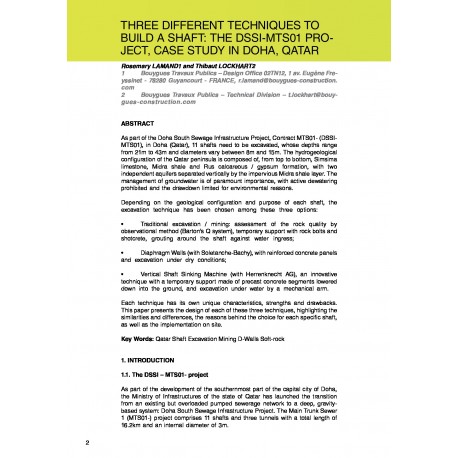Cart
0
0
No document
0,00 €
Total
Document successfully added to your shopping cart
Quantity
Total
There are 0 items in your cart.
There is 1 item in your cart.
Total documents
Total shipping
To be determined
Total
Search & filter
Search for a publication
Search & filter
Three different techniques to build a shaft: the DSSI-MTS01 project, case study in Doha, Qatar
1971_three_different_techniques_
As part of the Doha South Sewage Infrastructure Project, Contract MTS01- (DSSIMTS01), in Doha (Qatar), 11 shafts need to be excavated, whose depths range from 21m to 43m and diameters vary between 8m and 15m. The hydrogeological configuration of the Qatar peninsula is composed of, from top to bottom, Simsima limestone, Midra shale and Rus calcareous / gypsum formation, with two independent aquifers separated vertically by the impervious Midra shale layer. The management of groundwater is of paramount importance, with active dewatering prohibited and the drawdown limited for environmental reasons. Depending on the geological configuration and purpose of each shaft, the excavation technique has been chosen among these three options: • Traditional excavation / mining: assessment of the rock quality by observational method (Barton’s Q system), temporary support with rock bolts and shotcrete, grouting around the shaft against water ingress; • Diaphragm Walls (with Soletanche-Bachy), with reinforced concrete panels and excavation under dry conditions; • Vertical Shaft Sinking Machine (with Herrenknecht AG), an innovative technique with a temporary support made of precast concrete segments lowered down into the ground, and excavation under water by a mechanical arm. Each technique has its own unique characteristics, strengths and drawbacks. This paper presents the design of each of these three techniques, highlighting the similarities and differences, the reasons behind the choice for each specific shaft, as well as the implementation on site.




